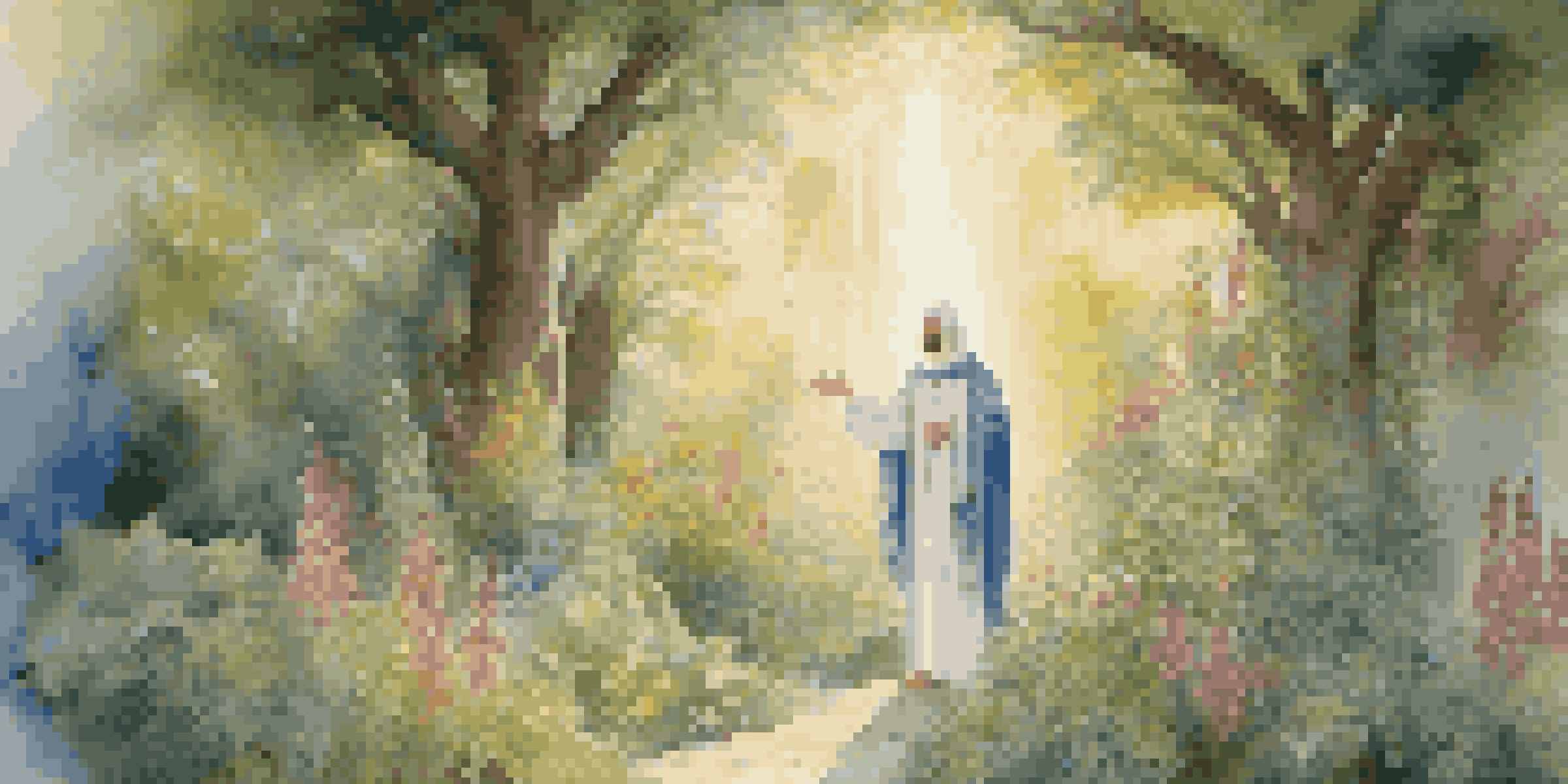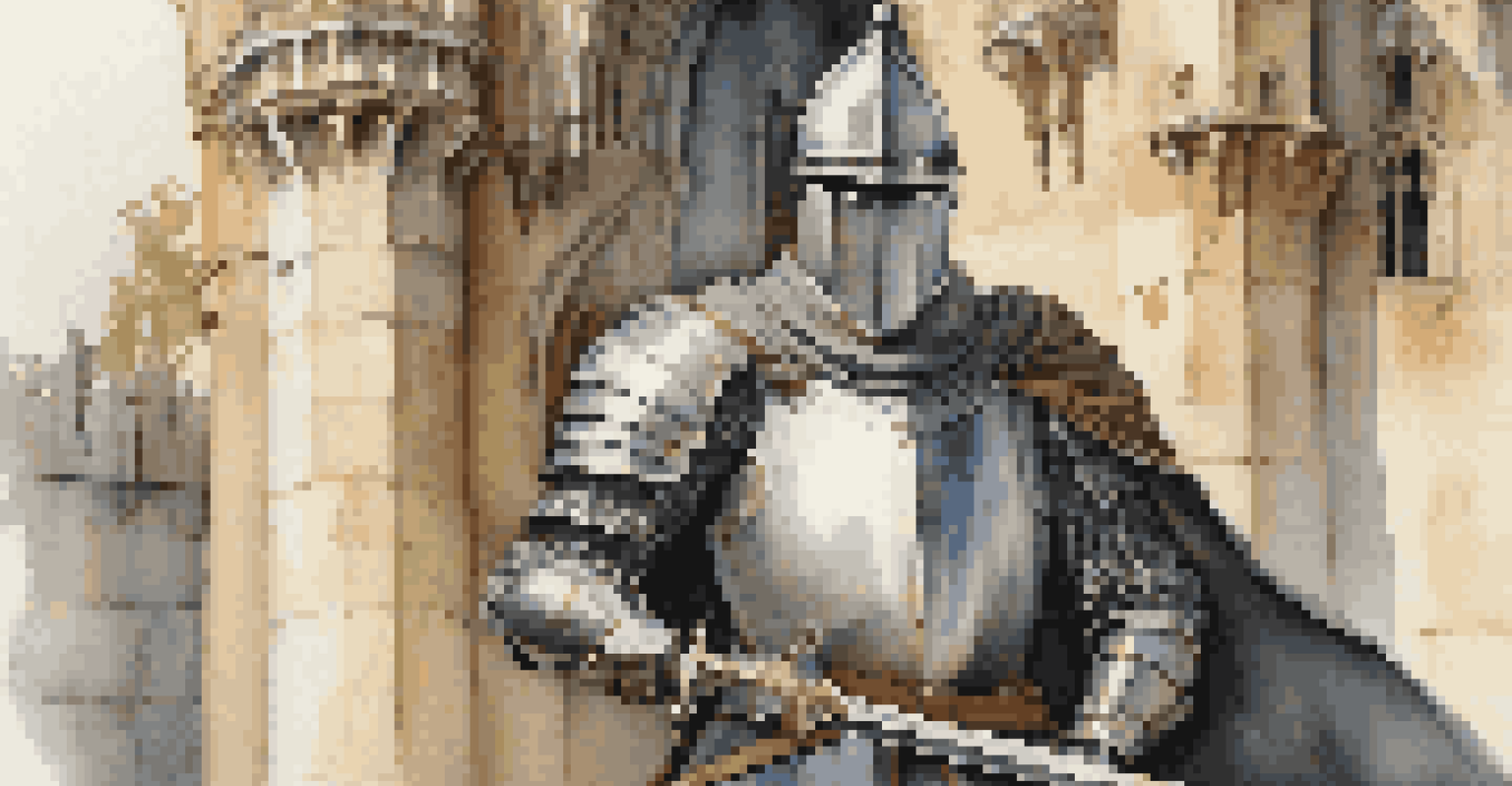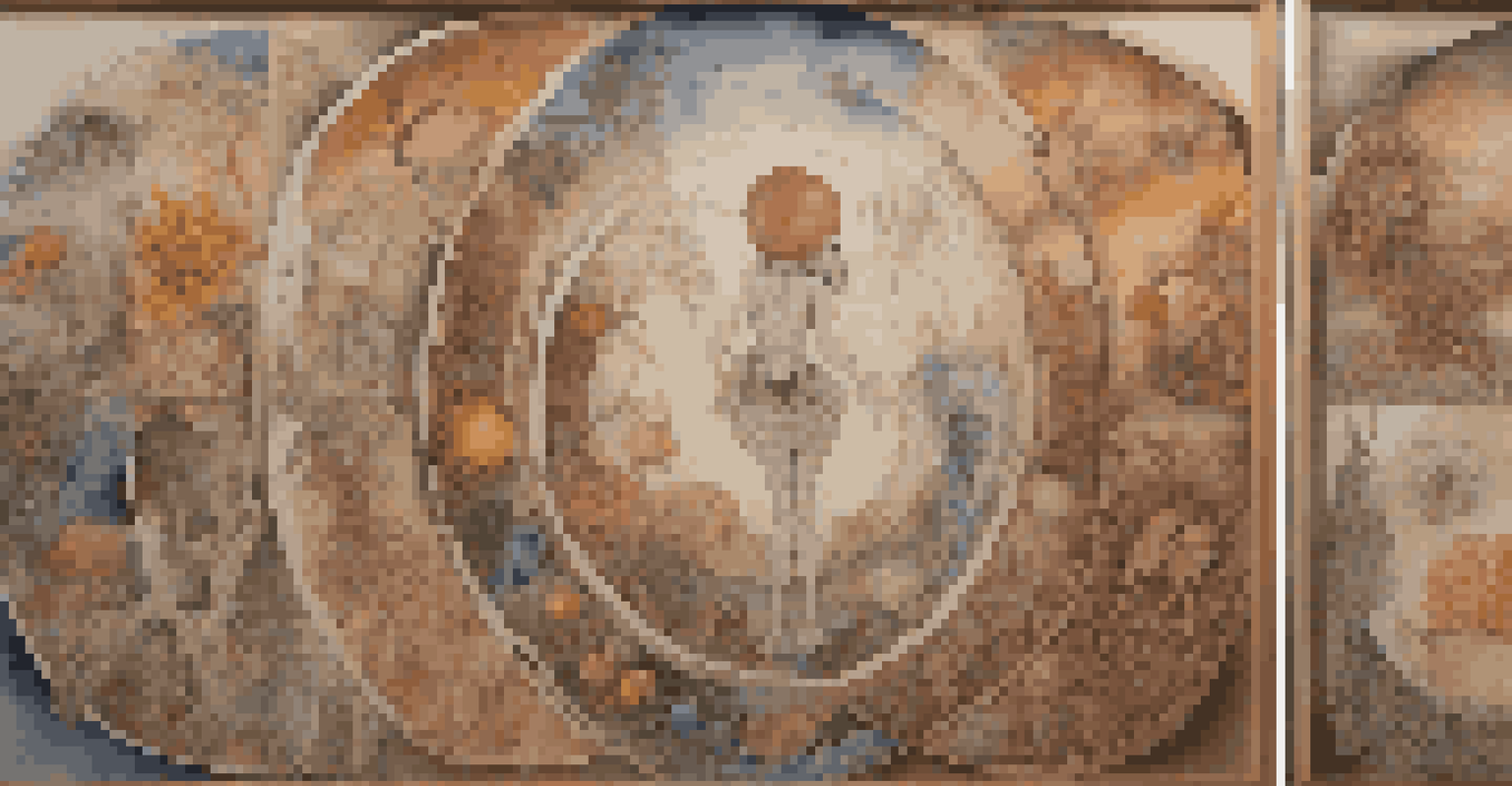The Body in Medieval Art: Symbolism and Representation

Understanding the Significance of the Body in Medieval Art
In medieval art, the human body was more than just a physical form; it served as a canvas for conveying deep spiritual and social messages. Artists used the body to represent various virtues, sins, and the divine, weaving a narrative that went beyond mere aesthetics. This symbolism was crucial in a period where religious themes dominated artistic expression and dictated how the body was perceived.
Art is the most beautiful of all lies.
For instance, the portrayal of Christ on the cross not only depicted suffering but also reflected ideas of redemption and sacrifice. Similarly, saints were often illustrated in ways that highlighted their virtues, such as humility or purity, helping viewers to aspire toward these qualities. The body, therefore, became a powerful tool for storytelling in the art of the time.
Understanding this significance helps us appreciate how medieval artists approached their work, often adhering to strict iconographic conventions. The body was not just an object of beauty; it was a vital part of the narrative that communicated complex theological concepts to the viewer.
The Influence of Religion on Body Representation
Religion played a pivotal role in shaping how the body was represented in medieval art. With Christianity's dominance in Europe, many artworks were commissioned by the church, leading artists to focus on biblical figures and saints. This emphasis on the divine meant that the human body was often idealized, reflecting spiritual perfection rather than earthly flaws.

For example, the elongated figures in Gothic art were not merely stylistic choices; they symbolized the aspiration towards the divine and the transcendence of the earthly realm. Artists aimed to express the spirituality of their subjects, often using idealized proportions and serene expressions to evoke a sense of holiness. This method allowed viewers to connect with the divine through the physical representation of the body.
Body as a Symbol in Medieval Art
In medieval art, the human body served as a powerful canvas for conveying spiritual and social narratives, transforming it into a vital storytelling tool.
Additionally, the bodies of saints were often depicted with specific attributes that conveyed their virtues and stories. This not only educated the audience about their lives but also encouraged emulation of their piety and moral standards. Thus, the intertwining of religion and body representation was fundamental in medieval art.
Symbolism of the Body in Secular Art
While much of medieval art is religious in nature, secular art also explored the body, often conveying themes of power, status, and human experience. Portraits of nobility and royalty utilized body language and attire to symbolize wealth and authority. The way figures were posed could suggest confidence, virtue, or even vulnerability, reflecting the complexities of human nature.
The painter tries to master the effects of light and shadow, and in doing so, he reveals the depth of the human experience.
Take, for example, the portrayal of knights in full armor; their bodies were represented as strong and heroic, embodying the ideals of chivalry and bravery. Such depictions were meant to inspire respect and admiration while reinforcing societal values. The body, in this context, served as a symbol of honor and duty.
Moreover, secular artworks began to incorporate more realistic portrayals of the human body, moving away from the strictly idealized forms seen in religious art. This shift allowed for a more profound exploration of human emotions and experiences, making the body a subject of both admiration and empathy in a rapidly changing society.
Gender and the Representation of the Body
The representation of the body in medieval art also reflected societal views on gender, with distinct differences in how male and female bodies were portrayed. Men's bodies were often depicted as strong and muscular, embodying the ideals of masculinity and power. In contrast, women's bodies were frequently idealized as delicate and passive, emphasizing beauty and purity.
This gendered approach can be seen in artworks featuring the Virgin Mary, whose body is often portrayed as ethereal and modest, symbolizing both her divine nature and her role as a symbol of femininity. Conversely, male saints and biblical figures are typically depicted in more assertive poses, highlighting their strength and leadership. This contrast reinforced existing gender norms and expectations within medieval society.
Religious Influence on Body Portrayal
The dominance of Christianity led to an idealized representation of the body in art, reflecting spiritual perfection and aiming to connect viewers with the divine.
Additionally, the depiction of female bodies sometimes served to comment on societal roles. For instance, the portrayal of Eve in the Garden of Eden often highlighted themes of temptation and sin, reflecting contemporary attitudes towards women. Thus, the representation of gender in medieval art not only illustrates individual bodies but also conveys deeper cultural narratives.
The Body and the Cycle of Life in Medieval Art
Medieval art also explored the theme of life and death through the representation of the body. Artists often depicted the human body in various states, from birth to decay, reflecting the transient nature of life. This cycle was a crucial aspect of the human experience and was often symbolized through the use of specific imagery, such as skulls in memento mori art, reminding viewers of their mortality.
The depiction of the body in scenes of resurrection or saints in heaven signified hope and the promise of eternal life. These portrayals served as visual reminders of the Christian belief in life after death, encouraging viewers to reflect on their own lives and spiritual journeys. This duality of life and death allowed artists to communicate profound philosophical and theological ideas.
Furthermore, the emphasis on the fragility of the body prompted a greater appreciation for the physical form. Artists strived to capture the beauty and complexity of the human experience, acknowledging that while the body is temporary, its significance in the spiritual journey is everlasting.
Regional Variations in Body Representation
The representation of the body in medieval art varied significantly across different regions, influenced by cultural, religious, and political factors. For instance, Byzantine art often emphasized flat, two-dimensional figures with an almost otherworldly quality, focusing on spiritual significance over realism. This style highlighted the divine nature of the subjects rather than their earthly forms.
In contrast, Northern European art began to incorporate more realistic and detailed representations of the body, showcasing individual characteristics and expressions. This realism reflected a shift towards humanism, emphasizing the importance of personal experience and the natural world. Artists like Jan van Eyck brought a new level of detail and emotion to their subjects, making the body a focal point of connection.
Regional Variations in Body Depiction
Different regions showcased unique approaches to body representation in medieval art, influenced by cultural, religious, and political factors, reflecting broader artistic movements.
Meanwhile, Italian Renaissance art took this further, revolutionizing body representation with techniques like perspective and anatomical accuracy. Artists such as Michelangelo celebrated the human form, showcasing its beauty and complexity. These regional variations illustrate how the representation of the body was not only an artistic choice but also a reflection of broader cultural movements.
The Legacy of Medieval Body Representation in Art
The ways in which the body was represented in medieval art have left a lasting legacy on subsequent artistic movements. The focus on symbolism and the interplay between the physical and spiritual realms continued to influence artists throughout the Renaissance and beyond. The ideals of beauty, proportion, and emotional expression established during this period laid the groundwork for future artistic exploration.
Moreover, the techniques developed during the medieval era, such as chiaroscuro and anatomical studies, became essential tools for later artists. These innovations allowed for more dynamic and lifelike representations of the body, enriching the artistic narrative. As a result, the body remained a central theme in art, evolving while still referencing its medieval origins.

Today, the study of medieval body representation informs contemporary discussions about identity, representation, and the human experience. Artists continue to draw inspiration from this rich history, reflecting on how the body serves as a powerful symbol of both personal and collective narratives.